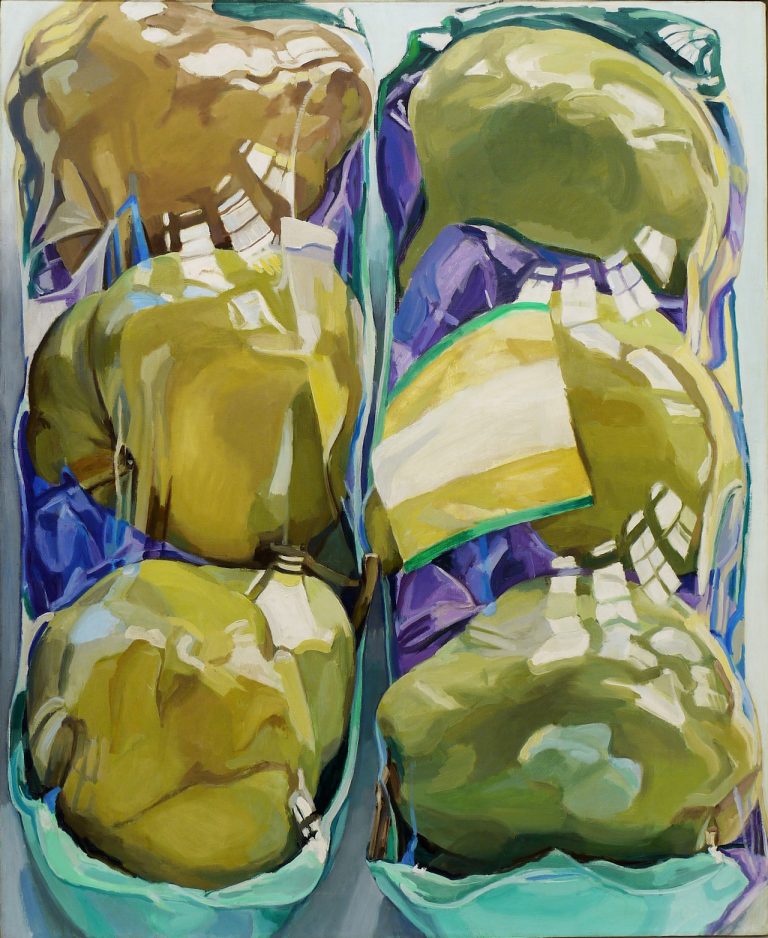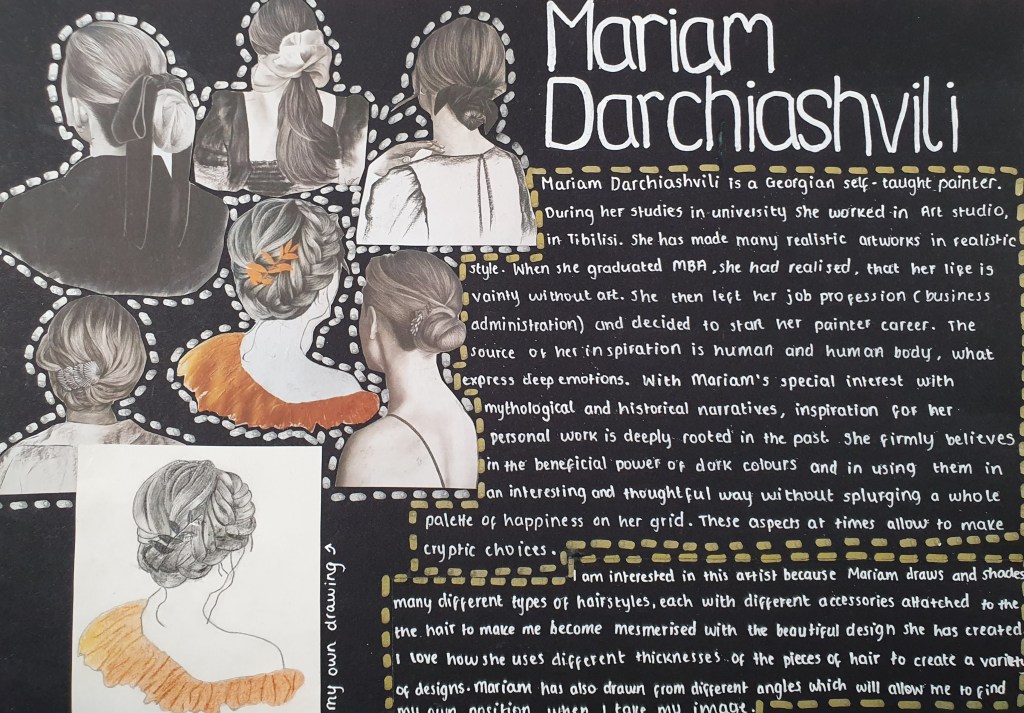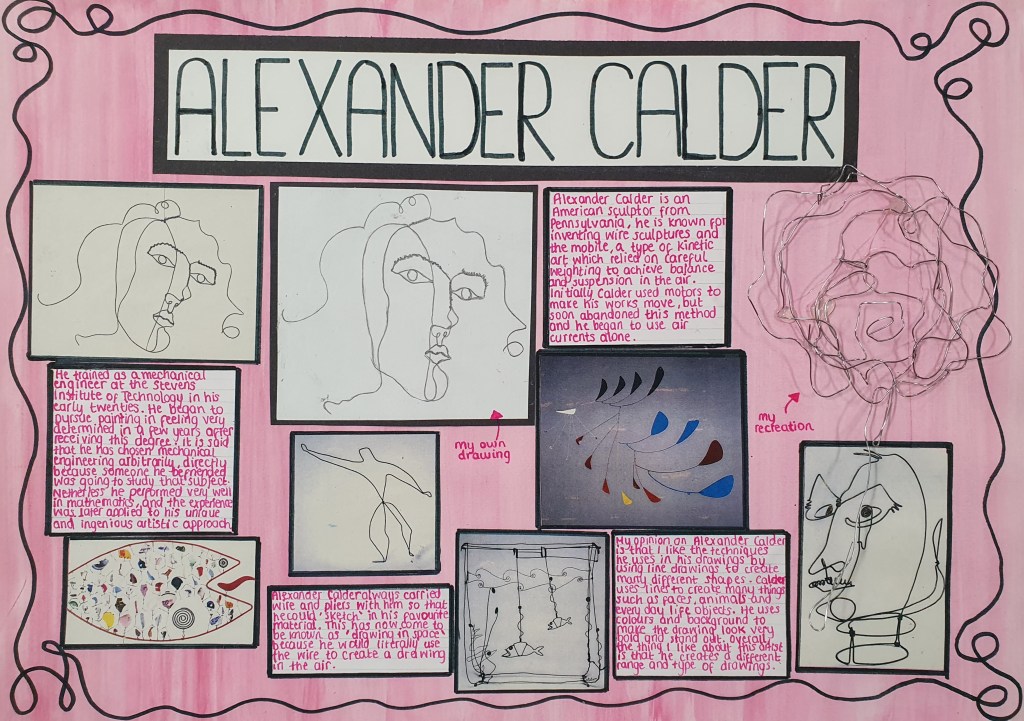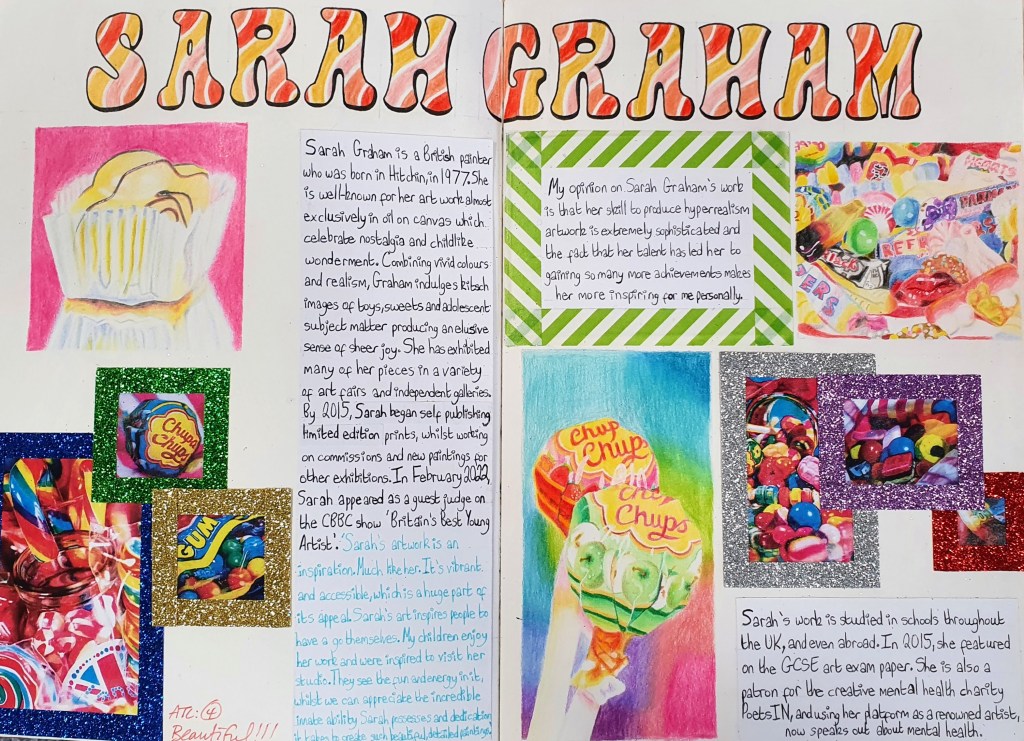Creating research about artists is a creative and exciting part of a GCSE course. It will allow you to discover new artworks and learn about how artists think and work.
This GCSE artist research guide will help you find an appropriate artist, analyse their work and present your research to a GCSE standard. The purpose of research in GCSE Art is to help you understand the artist’s style, techniques / processes and themes. You will use this knowledge to inform your own artwork.
Researching artists / art exhibitions / photographers / designers is an important aspect of your GCSE Art course and can help you improve your own work and generate new ideas.
Successful GCSE artist research pages are produced by collecting information and images about an artist you are studying or want to study. Your research should include:
- A brief biography of the artist
- Pictures of their artwork
- Analysis of their artwork(s)
- The inspiration behind their pieces
- Your own response
A guide to creating high quality artist research:
- Choose an appropriate artist
- It is important to choose a relevant artist. If your project is about portraits, you shouldn’t really be looking at artists who specialise in landscapes!
- You should also choose an artist that you like. It’s no good choosing an artist if you think their work is boring.
- Use an artist who has similar skills to you. Do you prefer drawing? Avoid painters!
- Find out facts about their life and education
- This will show that you understand the context of their work.
- Find good quality pictures of their artwork
- This will make your research look more professional.
- Try to find out what their process for making art is
- Artists often use social media to show their processes. Online museums and galleries also share information about the artist’s work or techniques.
How to present your artist research:
Once you have found an artist that you’re interested in and you have started to research them, you need to present what you have found. Use these tips to help show off your research:
DO:
- Plan your layout
- Include colours related to the artist
- Have a clear title
- Write neatly, checking spellings and grammar
- Type up annotations if it will help you
- Create a response using the same materials as the artist (eg. acrylic paint)
- Create your research on a computer if it will help you
DON’T:
- Spend hours on a fancy title
- Spend hours on a fancy background
- Feel like you need to write lots and lots
- Copy a full piece of the artist’s work – a colour study, or a section of their work is enough to learn from them
Let’s look at a good example of GCSE artist research:
- Plan your layout
- The layout is simple and clear; the background lines link to the artworks.
- Include colours related to the artist
- The student has stuck to black and white, just like the artist.
- Have a clear title
- The title is clear and reflects the ‘glitch’ style of the art
- Write neatly, checking spellings and grammar
- Type up annotations if it will help you
- The writing is neat, along straight lines
- Create a response using the same materials as the artist (eg. acrylic paint)
- The drawing is high quality and uses appropriate materials (pencil and white pen). The student has clearly studied the artist’s work carefully.
How to analyse artwork:
You should choose a piece of artwork by the artist to analyse. Writing an image analysis about art can seem strange because there are no absolutely ‘correct’ answers. However, if you’re not sure how to analyse artwork, this guide to analysing art can help.
You don’t need to answer every question, but aim for at least 2 or 3 from each section:

Artist: Janet Fish
Title: “Untitled (Two Packages of Pears)”
Date: (1969)
Medium: oil on canvas
Size: 52 1/4″ x 42″
Let’s analyse an artwork using some questions from the “Content, Form, Process, Mood” Guide:
What can you see in the picture? Think about objects, colours, shapes and textures.
The painting shows two packets of green pears, there are six in total. They are still in the wrapper and there are a lot of reflections painted to show the plastic covering them.
What is the composition (layout) of the work?
The pears fill the whole canvas and we can’t see much of the background. There is some symmetry with three pears on each side.
Is there a colour scheme? Why or why not?
There is a limited, harmonious colour palette of calm greens, blues and yellows. The colours are quite realistic and natural to reflect the subject matter.
Is it realistic, or surreal, or both? Why?
Overall the piece has realistic and surreal elements due to the sharp shapes of the light reflections that add contrast to the soft natural shapes. The shape of the reflections stand out against the soft round edges of the pears.
How was the artwork made?
The artist has used oil paints which enhances the glossy, plastic effect.
Do you think the artist made any other versions or sketches?
I think they would have sketched different layouts and mixed tester colours to match the fruit carefully.
Creating your own artist response:
Your response to an artist or artwork should use the same (or similar) materials to the artist. You might choose to focus on their use of colour or composition for example.
You should always include your opinion about an artist’s work in your research, explaining why you like/dislike their work.
You should also explain how it will inspire you or influence your own work.
In this artist research example the student has studied the artwork of Tjalf Sparnaay. Their response is a good quality drawing of a fried egg, copied from one of the artist’s paintings. The artist is a hyperrealist painter, but the student has responded with coloured pencils, showing skill in the accuracy of their drawing and managing to show some realism in their work through natural colours and a range of tones.
In this example, the student has researched the ceramic artist Mechelle Bounpraseuth. Their response doesn’t use clay like the artist, but the student has used the same idea as Bounpraseuth and chosen to draw a food object that reminds them of their family / friends. The drawing is highly skilled, showing a range of tones and highlights with exceptional attention to detail.
GCSE Artist Research examples:








Get art resources sent straight to your email:
Artist research page checklist:
Now that you’re got an idea of what good artist research looks like, download the checklist below to use and help make sure you have included everything you need.
This artist research page checklist is simple to use and will make sure you / your students have included everything they need to make a successful, GCSE standard artist research page!










Amazing work thanks
LikeLiked by 1 person